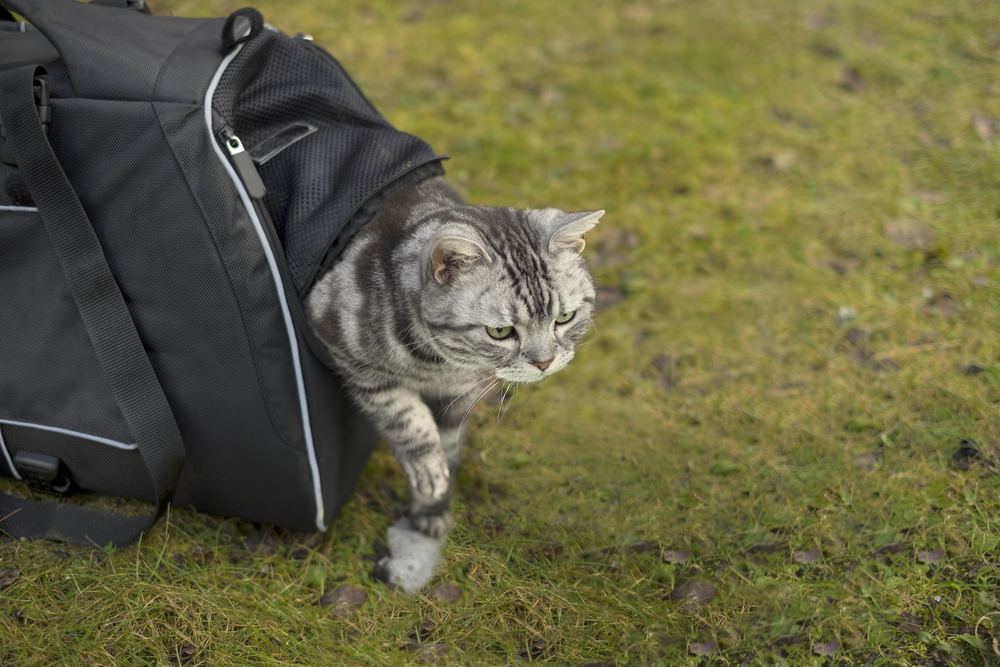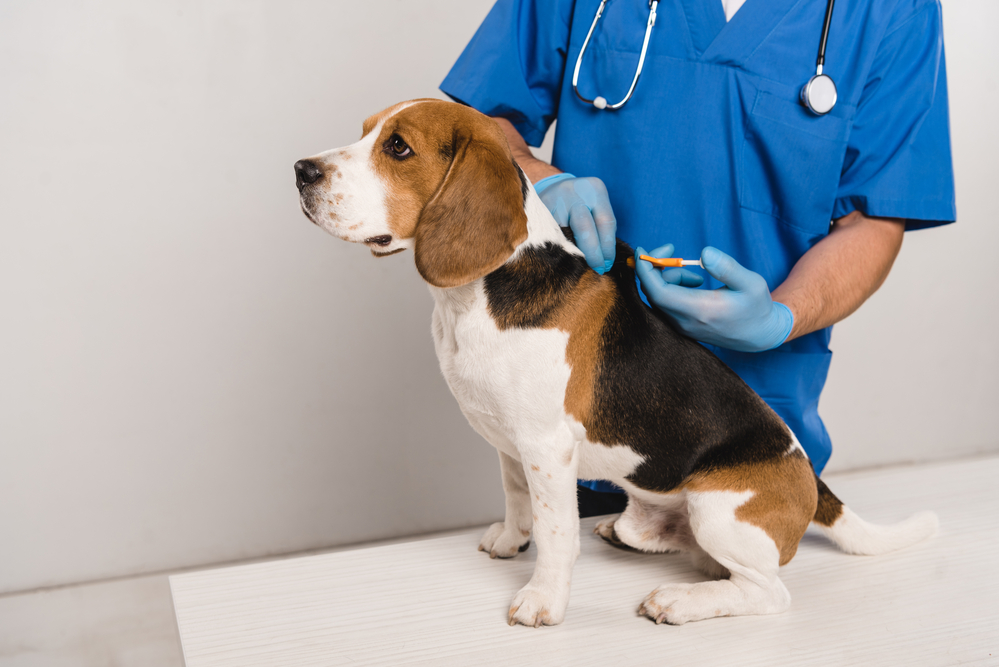
Pets are like members of our families. Any pet owner wants to make sure their pets are well-cared for. But sometimes, pets get loose. A cat can escape the house if someone leaves the door open. Dogs are expert diggers and may escape by digging under a backyard fence. That means that pet owners need to take extra steps to ensure their pets’ safety should they get lost.
Microchips have greatly improved the odds that lost pets are reunited with their owners. Microchipped pets have been found thousands of miles away from home and returned successfully to their families. But how do pet microchips work?

What Is a Pet Microchip?
A microchip is a transponder that uses radio frequencies to report a unique identification number. The microchip is implanted into the pet. Some types of microchips bond with the tissue underneath the pet’s skin so the chip doesn’t move from where it’s implanted. The microchip is a passive device that has only one function: to report the unique identification number when scanned.
Do I Need to Microchip My Pet?
Having a microchip can greatly increase the chance of a lost pet being found. Only about 5 percent of lost pets are ever found when they’re not microchipped. If you want to have the best chance of finding your pet if it gets lost, a microchip can be the way to go. There’s no guarantee that a microchip will find a lost pet, but the chances are much better.
What Kinds of Pet Microchips Are There?
All pet microchips are passive. This means that they have no internal source of power. The chip rests inside the pet, inert, until it’s activated by a scanner. There are three different frequencies used by microchips in the U.S. and not all of them are recognized by all microchip scanners. Some vets and shelters have global scanners that can handle all three frequencies, but not all do.
134kHz Microchip
The 134kHz microchip has been available in the United States since its introduction in 2004. Chips using this frequency follow standards set by the International Standards Organization. 134kHz microchips are considered the global standard and are the most commonly used frequency for microchips across the rest of the world when it comes to pet microchipping.
125kHz Microchip
The 125kHz microchip used to be the most common frequency in the United States. Chips using the 125kHz frequency are readable by most scanners across the United States.
128kHz Microchip
This third microchip frequency, the 128kHz frequency microchip, was first introduce in 2007. It’s not as commonly used as either the 134kHz or the 125kHz microchip. It’s readable by most scanners, but not all of them.

Choosing a Microchip
The most important thing to consider when choosing a microchip is ensuring the greatest chance that the microchip is scannable should your pet get lost. Not all scanners can read the 128kHz frequency microchips, for example. Depending on where you live, it may not be the best choice. Plus, lost animals can end up really far from home. You want your pet to have the best chance possible of being identified.
Your veterinarian can make a recommendation for which microchip is best for your pet. However, many experts from the American Animal Hospital Association and the American Veterinary Medical Association recommend the 134kHz microchip.
Traveling Internationally With a Pet
If you travel internationally and take your pet with you, you may want to consider the 134kHz microchip. This is the global standard for microchips, so there’s a greater chance that your pet will be found wherever you are. Plus, some countries may require a microchip for pets. If it’s not the 134kHz ISO microchip, you may be required to provide your own scanner.
Can a Pet Be Microchipped More Than Once?
It’s not recommended for a pet to have more than one microchip. This is because the microchips could interfere with each other when they’re scanned. The reading the scanner picks up may not be accurate if there’s more than one microchip.
How Does a Microchip Work?
A pet microchip is a small device that stores a unique identification number. Once the microchip has been implanted into your pet, the next step is to register that number. Registering the microchip will connect the unique ID number to your own contact information so that if your pet is found and the microchip scanned, the vet or shelter that scanned the chip can let you know they have your pet.
Scanning the Microchip
When a vet or a shelter scans the microchip, the only thing the scanner does is display the unique ID number. That ID number has to be registered with a database in order for the vet or shelter to look it up and find your contact information.
Registering a Microchip
The company that manufactured the microchip will include paperwork for you to fill out. Some may allow you to do the registration online. The downside of the registration process is that each company runs its own database. Some microchip companies will allow registrations from chips made by different companies, however.
Plus, the American Microchip Advisory Council is in the process of developing a network of the different microchip registration databases. By uniting the different registries as much as possible, they hope to streamline the process of reuniting lost pets with their families.
Can a Microchip Replace a Collar?
A microchip should be used in conjunction with your pet’s collar and tags. It shouldn’t replace it. Microchips aren’t infallible. It’s possible for them to fail, just as it’s possible for a pet to lost its collar. The more ways a vet or shelter has to identify a lost pet, the better your chances of a reunion.
What Do I Need to Do if I Move?
If you’ve moved, you’ll need to update your contact information wherever your pet’s microchip is registered. This includes and change of contact information, from an updated phone number or email address to a new address. Making sure the microchip number is registered with the latest contact information will greatly increase your chances of reuniting with a lost pet.
What if I Adopt a Pet That Has Already Been Microchipped?
If you adopt a pet and your new furry family member already has a microchip, you’ll need to update the registration. You vet should be able to scan the chip for the number and let you know what kind of chip it is.




